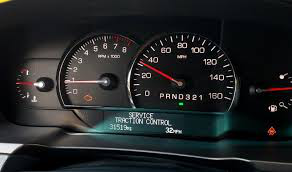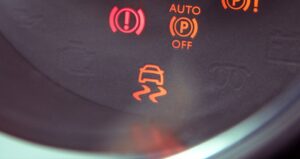
What is traction control in a car? What does the TCS light mean and what makes it turn on? Causes of TCS lights on Dashboard, Utilization of traction control, How Does Traction Control Work?
The traction control framework (TCS) identifies in the event that a deficiency of traction happens among the vehicle’s wheels. After recognizing a wheel that is losing its hold out and about, the framework consequently applies the brakes to that singular one, or cuts down the motor capacity to the slipping wheel. On the off chance that the wheels lose their hold out and about, it can lead the vehicle to be shaky, bringing about a risky circumstance. Such traction misfortune ordinarily happens on cold or frigid streets and in blustery climates.
Kia’s minimal SUVs, including the Seltos, offer a component called the “Multi-traction control,” which changes the wheels’ traction as per conditions. The innovation decreases wheel slippage through rough terrain by effectively controlling the traction power of the front wheels through the TCS. On account of this new innovation, it even permits reduced SUVs to drive on frigid, sloppy, and sandy streets with just the front two wheels.
What is traction control in a car?
What does the TCS light mean and what makes it turn on?
You can observe a yellow light known as the “TCS light” on the dashboard, which comes on now and again. All in all, how does light tell us?
1) The TCS light blazes when your vehicle begins speeding up.
The TCS light squinting upon speed increase could imply that the surface isn’t offering a lot of grating. The light is intended to streak while driving on a cold, sloppy, or frigid street. In any case, assuming the light squints while your vehicle dials back and the street isn’t tricky, then, at that point, the issue could be with the ABS (Anti-lock slowing mechanism) sensor on your vehicle. For this situation, check the codes from the ABS control unit to check whether the sensor is failing to work.
2) The TCS light is on with an OFF sign under.
Just, this implies that your TCS is off. You can undoubtedly turn the TCS framework on and off with a button inside your vehicle. On the off chance that you can’t track down the button, check out the help manual to discover where it is.
3) The TCS light is continually on.
A ceaseless TCS light, regularly joined by the ABS light, implies something is happening in your traction control framework. The arrangement is to peruse the codes in the ABS control unit and see what they say. Likewise, you can have your repairman investigate.
Causes of TCS lights on Dashboard
✔ Disappointment in the ABS sensor
✔ Issues in the wiring to the ABS sensors
✔ Issues in the attractive ABS ring
✔ Water invading to ABS sensor connectors
✔ Disappointment in the ABS control unit
Driving with the TCS light on
Since traction control is exceptionally basic for driving, in the event that the TCS light turns on it ought not be disregarded. Disappointment in the TCS can hamper your wheels from appropriately turning and prompt you to let go completely over the vehicle on dangerous streets, which hurts your tires’ surface, motor presentation and raises the danger of mishaps. Issues connected with the TCS or ABS can prompt the disappointment of brakes. So on the off chance that the TCS and ABS lights come on, you ought to promptly have your technician review them.
How Does Traction Control Work?
Traction control works in perhaps a couple ways relying upon the producer. Some, similar to a modest bunch of supercar makers, drop in ridiculously confounded frameworks, some of which are coordinated with the vehicle’s steadiness control and incorporate yaw, pitch, and roll controls, as well as using pressurized water incited influence bars, brake and force vectoring, and mid-air hop controls.
The most broadly utilized traction control frameworks , nonetheless, either apply the ABS to the slipping wheel or lessen the motor’s power when wheel slip is distinguished. These frameworks impede one, two, three, or each of the four wheels’ power, contingent upon the vehicle’s drivetrain, when a wheel loses footing.
This is all with an end goal to both alleviate slip and help in driving the vehicle toward movement. You know, really having the option to drive the vehicle at whatever point the climate transforms into a snowstorm. Yippee for traction control!
What’s the Difference Between Traction and Stability Control?
These two frameworks go inseparably, however, aren’t exactly the same thing, notwithstanding what you might have heard. As expressed, traction control directs wheel slippage and keeps up with foothold in low-foothold environs. Steadiness control, notwithstanding, keeps the vehicle’s yaw, pitch, and roll control. Basically, strength control moves your vehicle along in an orderly fashion even in harsh climates or low-traction circumstances.
Generally speaking, these frameworks are there to save your butts when the climate turns sour. However, for devotees, they’re additionally there to cause you to feel like a driving god. Aficionados benefit from traction and security controls, as they’ll keep them on target, on the dashing line, and out of tire obstructions or away from a street’s bluff, even with some unacceptable data sources.
Parts of traction control
By and large, the fundamental equipment for traction control and ABS are generally something similar. In numerous vehicles, traction control is given as an extra choice to ABS.
Each wheel is outfitted with a sensor that detects changes in its speed because of a loss of traction.
The detected speed from the singular wheels is given to an electronic control unit (ECU).
The ECU processes the data from the haggles slowing down to the impacted wheels by means of a link associated with a programed traction control (ATC) valve.
In all vehicles, traction control is consequently begun when sensors identify loss of traction at any of the wheels.
Utilization of traction control
In Street Vehicles : Traction control has generally been a security highlight in premium superior execution vehicles, which in any case need delicate choke contribution to forestall turning driven wheels while speeding up, particularly in wet, frigid, or blanketed conditions. As of late, traction control frameworks have opened up in non-execution vehicles, minivans, and light trucks, and in a few little hatchbacks.
In race Vehicles: Traction control is utilized as an exhibition improvement, permitting most extreme traction under speed increase without wheel turn. While speeding up out of a turn, it keeps the tires at ideal slip proportions.
On bikes: Traction control for creation bikes was most readily accessible with the BMW K1 in 1988. HONDA offered Traction Control as a choice, alongside ABS on their ST1100 starting around 1992. By 2009, traction control was a possibility for a long time presented by BMW and Ducati, the model year 2010 Kawasaki Concours 14 (1400GTR)and Honda CBR 650R in the year 2019, and Triumph “Current Classic” line of bikes.
In rough terrain vehicles: Traction control is utilized rather than or notwithstanding, the mechanical restricted slip or locking differential. It is frequently executed with an electronic restricted slip differential, as well as other automated controls of the motor and transmission. The turning wheel is eased back with short utilizations of brakes, redirecting more force to the non-turning wheel; this is the framework embraced by Range Rover in 1993, for instance. ABS brake-traction control enjoys a few upper hands over restricted slip and locking differentials; for example, controlling control of a vehicle is simpler, so the framework can be consistently empowered. It additionally makes less weight on powertrain and driveline parts, and builds sturdiness as there are less moving parts to fail.
When modified or aligned for rough terrain use, traction control frameworks like Ford’s four-wheel electronic traction control (ETC) which is incorporated with Advance Trac, and Porsche’s four-wheel programed brake differential (ABD), can send 100% of force to any one wheel or wheels, by means of a forceful brake procedure or “brake locking”, permitting vehicles like the Expedition and Cayenne to continue to move, even with two wheels (one front, one back) totally off the ground
Debate in motorsports
Exceptionally successful yet little units are accessible that permit the driver to eliminate the traction control framework after an occasion, whenever wanted. In Formula One, a work to boycott traction control prompted a difference in rules; for 2008: each vehicle should have a norm (however custom mappable) ECU, given by the FIA, which is somewhat fundamental and doesn’t have traction control abilities. In 2008, NASCAR suspended a Whelen Modified Tour driver, group boss, and vehicle proprietor for one race and excluded the group subsequent to observing problematic wiring in the start framework, which might have been utilized to execute traction control.
Traction control in cornering
Traction control isn’t simply utilized for further developing speed increases under tricky conditions. It can likewise assist a driver with cornering all the more securely. If an excessive amount of choke is applied during cornering, the determined wheels will lose traction and slide sideways. This happens as understeer in front-wheel-drive vehicles and oversteer in back tire drive vehicles. Traction control can relieve and potentially even prevent understeer or oversteer from occurring by restricting capacity to the overdriven wheel or wheels. Nonetheless, it can’t expand the restrictions of frictional grasp accessible and is utilized uniquely to diminish the impact of driver blunder or make up for a driver’s powerlessness to respond rapidly to the point of wheeling slip.
Car producers state in vehicle manuals that traction control frameworks ought not energize perilous driving or support driving in conditions past the driver’s control.


